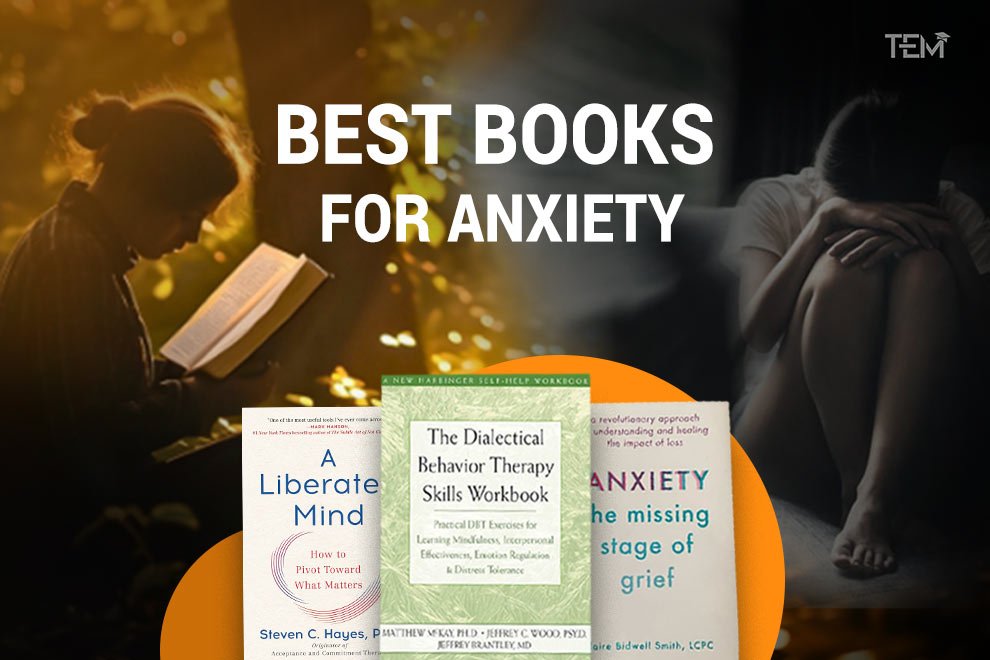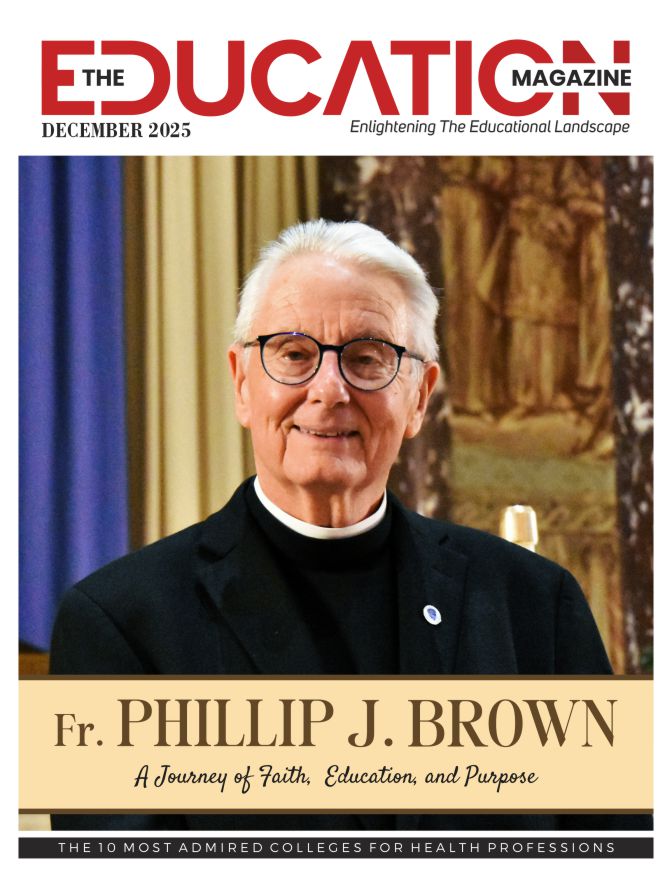That lump in your throat before an exam? The sudden urge to bail on a party? Yep, we’ve been there. University anxiety is real, like a heavy backpack you can’t take off. But what if I told you there’s a way to lighten that load? This isn’t just another list.
Well, this is your personal guide to the 10 best books for anxiety. These pages are packed with powerful tools from top experts to help you handle academic stress, social pressure, and that nagging voice of self-doubt. Your journey to feeling calm and confident starts right here.
Let’s Explore 10 Best Books for Anxiety
| S. No. | Book | Author | Amazon Rating |
| 1. | Under Pressure | Lisa Damour | 4.7/5 |
| 2. | Don’t Feed the Monkey Mind | Jennifer Shannon | 4.6/5 |
| 3. | A Liberated Mind | Steven C. Hayes | 4.6/5 |
| 4. | The Dialectical Behavior Therapy Skills Workbook | Chapman, Gratz & Tull | 4.6/5 |
| 5. | Feeling Better: CBT Workbook for Teens | Rachel Hutt | 4.6/5 |
| 6. | How to Be Yourself | Ellen Hendriksen | 4.6/5 |
| 7. | Retrain Your Brain | Seth J. Gillihan | 4.6/5 |
| 8. | Anxiety: The Missing Stage of Grief | Claire Bidwell Smith | 4.6/5 |
| 9. | Negative Self‑Talk and How to Change It | Shad Helmstetter | 4.5/5 |
| 10. | Be Calm | Jill Weber | 4.5/5 |
- Under Pressure
- Published In: 2019
- The Name and Why It’s a Legend:
Let’s talk about a title that just gets it. ‘Under Pressure’ hits the nail on the head, right? It perfectly describes that feeling of being squeezed from all sides. The author, Lisa Damour, is a total rockstar—a renowned psychologist and New York Times columnist who translates deep clinical wisdom into advice that actually helps. The title alone pulls you in, making you feel seen.
- What’s Its Secret Sauce?:
So, what makes this book a global standout? It zooms in specifically on the unique pressures that adolescent and college-aged females face. Think about it: academic goals, the social media tornado, and cultural expectations. Damour connects developmental psychology with real-life stories, explaining why these stressors have shot through the roof. It’s a super-impressive deep dive!
- Your Big “Aha!” Moment:
You’ll finally learn to tell the difference between ‘good’ stress (the kind that motivates you) and soul-crushing anxiety. This book gives you the tools to face exams and those ‘am I good enough?’ fears without getting stuck in a perfectionism trap or imposter syndrome. It’s all about building resilience and navigating your future with confidence.
- Don’t Feed the Monkey Mind
- Published In: 2021
- The Name and Why It’s a Legend:
You have to love this metaphor! The “monkey mind”—that restless part of your brain that jumps from one worry to the next. The imagery is so vivid! Jennifer Shannon, an LMFT and expert in Cognitive Behavioral Therapy (CBT), created this dynamic guide using CBT, Acceptance and Commitment Therapy (ACT), and mindfulness. The fun illustrations and practical approach made it a massive hit with young adults.
- What’s Its Secret Sauce?:
This book is brilliant because it blends multiple therapy models to quiet that constant anxious chatter. It gives you a clear roadmap to stop the fear-and-worry cycle that so often fuels student mental health struggles. By explaining the brain science behind the ‘monkey mind,’ it offers a relatable perspective you just don’t find elsewhere.
- Your Big “Aha!” Moment:
The lightbulb moment here is realizing that your anxious thoughts aren’t you and they aren’t commands. You learn real, concrete skills to ’stop feeding’ them, which instantly reduces their power. For anyone struggling with social anxiety, academic stress, or just feeling emotionally overwhelmed, this is a beacon of hope.
- A Liberated Mind
- Published In: 2019
- The Name and Why It’s a Legend:
‘A Liberated Mind’—doesn’t that just sound like a breath of fresh air? It promises a shift from being tangled up in your thoughts to what’s called psychological flexibility. The author, Steven C. Hayes, Ph.D., is the founder of Acceptance and Commitment Therapy (ACT)! He masterfully mixes science and storytelling to show how we suffer when we fight our own thoughts and feelings. It’s considered the definitive guide to living a life driven by your values, not your anxiety.
- What’s Its Secret Sauce?:
Hayes introduced a revolutionary idea: psychological flexibility. Instead of fighting anxiety, you learn to welcome your thoughts and feelings with compassion. It’s a complete paradigm shift that has changed therapy worldwide. How incredible is that?
- Your Big “Aha!” Moment:
You learn to step back from anxious thoughts—about exams, social rejection, you name it—and connect with what truly matters to you. Suddenly, anxiety isn’t a wall; it’s a signal. This book gives you the power to take action despite feeling anxious, a skill that is absolutely life-changing for any student.
- The Dialectical Behavior Therapy Skills Workbook
- Published In: 2015
- The Name and Why It’s a Legend:
This one gets straight to the point. It’s a workbook based on Dialectical Behavior Therapy (DBT), all about learning practical skills. The authors—Chapman, Gratz, and Tull—are respected clinical psychologists who are experts in emotion regulation. The workbook format itself screams, ‘Let’s do this!’ It’s designed for you to actively build your coping strategies.
- What’s Its Secret Sauce?:
Its power lies in making the amazing skills of DBT—emotion regulation, distress tolerance, mindfulness, and interpersonal effectiveness—totally accessible. For a student battling daily anxiety, this is pure gold. It provides step-by-step exercises designed specifically for when you feel emotionally overwhelmed.
- Your Big “Aha!” Moment:
You discover real, evidence-based techniques to turn down the volume on distressing emotions, whether they’re from academic stress or social drama. You get to practice mindfulness and learn how to regulate your reactions. It’s an active, hands-on path to calm.
- Feeling Better: CBT Workbook for Teens
- Published In: 2019
- The Name and Why It’s a Legend:
The title, ‘Feeling Better,’ is so simple and hopeful. That’s exactly what you want when you’re struggling. Author Rachel Hutt, a clinical psychologist, designed this workbook to make CBT practical and relatable for the complex emotional world of teens and young adults. It’s famous for adapting powerful CBT techniques into something you can actually use.
- What’s Its Secret Sauce?:
It’s an interactive, activity-based guide! It stands out by focusing on real-world applications of CBT. It doesn’t just tackle anxiety; it helps you build self-esteem and manage your moods, giving you a holistic toolkit. The exercises were created with adolescent life in mind, making it a go-to resource across the globe.
- Your Big “Aha!” Moment:
The big win here is realizing you have control. Through simple but powerful CBT exercises, you learn to untangle negative thoughts, give your self-esteem a boost, and change your behaviors. This directly helps with the biggies: academic pressure, social worries, and that “I can’t handle this” feeling.
- How to Be Yourself
- Published In: 2019
- The Name and Why It’s a Legend:
“How to Be Yourself”—if you’ve ever felt social anxiety, you know that’s the ultimate goal. Clinical psychologist Ellen Hendriksen wrote this with so much compassion and scientific smarts. It’s praised as a groundbreaking book because it combines research-backed CBT with a warm, funny voice that makes you feel like you’re talking to a friend.
- What’s Its Secret Sauce?:
Its magic is in the mix of hard science, hilarious stories, and easy-to-do exercises. Hendriksen gets to the heart of how social anxiety messes with your identity. She gives you techniques to quiet that inner critic and finally let your authentic self shine through.
- Your Big “Aha!” Moment:
You’ll realize that social anxiety is like a funhouse mirror—it distorts how you see yourself. The most empowering part? The book shows you that you already have the tools to fix it. You learn to reframe anxious social thoughts and engage with confidence, both in the classroom and out with friends.
- Retrain Your Brain
- Published In: 2016
- The Name and Why It’s a Legend:
“Retrain Your Brain” is such a powerful and direct title. It tells you exactly what you’re going to do: rewire your mind using CBT. The author, Seth J. Gillihan, Ph.D., uses his clinical experience to create a 7-week plan in a workbook format. Its fame comes from this clear, step-by-step structure that lets you guide your own healing.
- What’s Its Secret Sauce?:
It’s one of the few self-help books that gives you a comprehensive, time-based CBT plan backed by clinical research. The 7-week structure is the perfect balance—it’s thorough but doesn’t feel overwhelming. It allows students to tackle anxiety systematically.
- Your Big “Aha!” Moment:
You discover that anxiety and depression aren’t life sentences. With consistent, structured exercises, you can actually change how you feel. The weekly plan teaches you to spot and challenge those unhelpful thoughts, reshaping your mindset to reduce anxiety. It’s an incredible model for handling stress.
- Anxiety: The Missing Stage of Grief
- Published In: 2018
- The Name and Why It’s a Legend:
Wow, what a mind-blowing concept! This title suggests that anxiety is an overlooked part of grief. Claire Bidwell Smith, a psychologist and grief counselor, is known for her beautiful writing on loss. The book is famous for pioneering this new idea: that your anxiety might actually be a symptom of unresolved grief.
- What’s Its Secret Sauce?:
It is a groundbreaking link between grief and anxiety that gives you a whole new way to understand your feelings. This is huge for students, who are often navigating big life changes and losses while juggling school and social life. It provides a unique path to healing through emotional awareness.
- Your Big “Aha!” Moment:
You learn to see your anxiety not just as stress, but possibly as a natural reaction to grieving—grieving a past self, a lost opportunity, or a disrupted future. This perspective shift fosters so much self-compassion and helps you heal on a much deeper level during tough transitions.
- Negative Self‑Talk and How to Change It
- Published In: 2019
- The Name and Why It’s a Legend:
This title gets right to the heart of the problem: that nasty inner critic. Shad Helmstetter, Ph.D., is a big name in research on self-talk. His book is celebrated because it’s so concise and straightforward. It teaches you how to spot and transform the negative thought patterns that tank your confidence and fuel your anxiety.
- What’s Its Secret Sauce?:
Its global appeal is its simplicity and clarity. It’s short, sweet, and to the point. Unlike bulky self-help books, this one boils down the essence of cognitive restructuring into steps you can use today. Its impact goes beyond just anxiety to boosting your overall self-improvement.
- Your Big “Aha!” Moment:
You realize just how much the stories you tell yourself shape your reality. It’s a game-changer. By learning to change that negative self-talk, you can break the anxiety cycle, build real self-esteem, and better manage the academic and social pressures that used to trip you up.
- Be Calm
- Published In: 2019
- The Name and Its Unique Fame:
‘Be Calm.’ It’s so soothing and direct, like a reassuring hand on your shoulder. That’s exactly the book’s mission: to offer immediate relief. Jill Weber, Ph.D., packs it with evidence-based techniques that are easy for anyone to use. It’s praised for being a practical, science-backed toolkit to manage anxiety in the moment.
- What’s Its Secret Sauce?:
It stands out because its strategies are so broadly applicable and clear. Dr. Weber blends mindfulness, breathing exercises, and cognitive tricks that you can use anywhere, anytime—even secretly during a class or presentation. This makes it perfect for students who are constantly juggling stressors.
- Your Big “Aha!” Moment:
The biggest takeaway is that you can regain control, even when you feel like you’re spiraling. You learn simple, proven techniques to calm your mind quickly during a test, a presentation, or an awkward social situation. This book gives you the confidence that, no matter what, you know how to find your center.
My Opinion
Let me tell you something real: bibliotherapy, or using books to heal, is a powerful first move for any student wrestling with anxiety. Now, are these ‘best books for anxiety’ a substitute for a therapist? No. But they are an incredible starting point. They give you the language and self-awareness to understand what’s happening inside your own head.
Think of them as a pre-game for taking control. These authors translate big ideas like cognitive defusion and emotional regulation into steps you can actually take. When you read them, you’re not just reading; you’re building a foundation for your mental well-being. Truly powerful stuff.
Here’s Your Toolkit: Some Tips to Win Over Anxiety with Books
- Tip 1: Play Matchmaker with Your Mind
First, get honest about what’s triggering you. Is it social fear? Exam pressure? Existential dread? Match your biggest challenge to the book that specializes in it. For example, grab “How to Be Yourself” for social anxiety or “Feeling Better” for practical CBT on performance pressure.
- Tip 2: Talk Back to the Book
Don’t just read—have a conversation! Scribble notes, questions, and “Aha!” moments in the margins or a journal. Challenge the ideas. Connect them to your life. This turns passive reading into active transformation and helps you process everything on a deeper level.
- Tip 3: The “One-Chapter” Promise
Feeling too overwhelmed to even start? Promise yourself you’ll read just one chapter. That’s it. Anxiety loves to make us avoid things. Breaking a book into tiny, manageable pieces takes the pressure off and lets you build momentum. Every chapter is a small victory.
- Tip 4: Bridge the Gap from Page to Real Life
After a chapter, pick one single idea and try it out that day. Use a breathing technique before a stressful email. Reframe a negative thought before meeting friends. This is how you take theory and make it real, tangible, and sustainable.
- Tip 5: Remember, Anxiety Hates Company
Anxiety wants you to feel isolated. Don’t let it. Start a small book club with trusted friends or classmates. Talking about what you’re learning builds connection, deepens your understanding, and smashes the stigma. It’s a powerful reminder that you’re not the only one.
Feeling less alone already? Imagine how a friend might feel reading this. Sharing this blog isn’t just about passing on a link; it’s a small act of kindness that can make a huge difference. Be the person who starts the conversation, who offers a lifeline. Let’s create a community where we look out for each other. Your click to share could be the start of someone else’s journey to calm. Go on, be that person.











